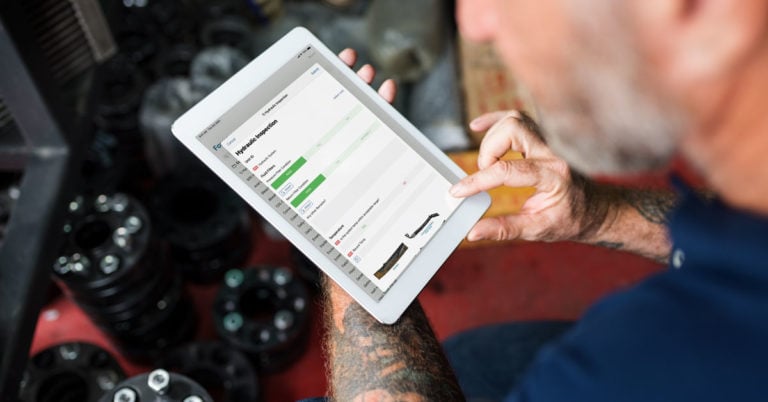The functionality of an oil pump is vital for the seamless operation of industrial machinery. It ensures that all components are properly lubricated, reducing friction and wear and thereby extending the life of machinery. Thus, oil pumps are crucial to the lubrication and maintenance of many assets. Below are the five signs of a bad oil pump and ways to fix them. Knowing these signs will help you and your team catch failures before they happen.
Training your operators in spotting these signs is also beneficial for the early detection and prevention of machine damage.
Although you can perform manual lubrication, oil delivery systems with oil pumps are necessary for machines that require lubrication while moving or in operation. Inspection of oil pumps is a crucial step in lubrication management. If unmonitored, oil pumps can fail and result in the drying out of machine parts that need lubrication.
With proper inspection and monitoring, you can spot early signs of a bad oil pump and prevent the resulting damage to your machines.
The 5 Common Signs of a Bad Oil Pump in Industrial Machinery
A bad oil pump can show several symptoms that are easy to spot. This is especially important because oil pumps can gradually deteriorate, resulting in eventual failure. The five common signs of a bad oil pump are:
1. Increased Equipment Temperature
Proper lubrication lowers equipment temperature by:
- Absorbing extra heat produced by industrial machinery and releasing it as it flows around other components, and
- Reducing friction between machine components.
Thus, if there is a significant increase in temperature, it is a sign of increased friction and heat build-up. Shutting down the pump and motor is the first step in dealing with increased temperature due to a malfunctioning oil pump. It means stopping operations, but it is the only way to prevent further damage to your machine. Once shut down, the next step is to perform the necessary troubleshooting and repair of the oil pump.
2. Insufficient Oil Pressure
Oil leaks from your damaged lubricating system by the pressure produced by the oil pump. If there is insufficient oil pressure, the oil won’t be able to travel through the lubricating system into the machine parts to lubricate them.
Adequate oil pressure means sufficient oil supply to the machine parts that need protection from friction or wear and tear. Most lubricating systems have an oil pressure gauge that shows if the oil pressure within your lubrication system is within an ideal range. Otherwise, you must procure oil pressure measuring instruments to test and monitor oil pressure.
In case of an oil pressure drop, you need to troubleshoot your oil pump. Check for blockage within the oil pump and signs of contamination within the reservoir. If there are no signs of blockage or contamination, check the power supply and motor of the oil pump.
3. Noisy Oil Pump
Oil pumps that are working properly stay quiet. A malfunctioning oil pump may produce a whining noise caused by the wearing out of the pump’s gears. In case of any undesirable and unusual sounds, turn the machine and lubricating system off before inspecting the oil pump gears.
4. Noise in the Hydraulic Lifter
The hydraulic lifter is an essential part of the valve-train functions of certain components, helping maintain valve clearance. This critical function makes the hydraulic lifters need regular and adequate lubrication.
If oil cannot reach the hydraulic lifter, it will result in excessive friction and difficulty moving. The friction and strain result in noise as the hydraulic lift tries to move without lubrication.
Troubleshoot a noisy hydraulic lifter by first checking the oil level and oil pressure. Check also if the oil pump motor is working as it should.
5. Noise from the Valve-Train System
Other components of the valve-train system can also make abnormal noise due to inadequate oil supply and possible malfunction of the oil pump. Simply by listening for noise in the valve train, you can diagnose many signs of a bad oil pump. Quit oil pump operations once you hear any tell-tale noise, and inspect your lubrication system accordingly.
How Can Redlist Help?

A defective oil pump that shows any of the above signs needs urgent repair or replacement. Doing so will prevent more machine damage and downtime. Thus, including oil pumps in your regular lubrication inspection and monitoring will allow you better chances of detecting these signs earlier. Earlier detection and preparation can help you reduce downtime and lower maintenance costs.
Redlist enhances awareness of lubrication issues by providing real-time alerts and detailed reports on equipment status. The software educates your maintenance team with trend analyses and historical data, enabling informed decision-making. Redlist assists in selecting the right maintenance strategies by offering predictive maintenance tools, reducing the chances of machine failure.
With a well-maintained fleet of industrial equipment powered by an effective oil pump maintenance strategy, businesses can focus on growth without the hindrance of mechanical failures.
Redlist integrates with existing systems, providing a centralized platform for lubrication management, which translates into more efficient operations. By leveraging Redlist’s capabilities, businesses can shift from a reactive to a proactive maintenance model, reducing the risk of oil pump failure and its associated costs. This proactive approach not only ensures the smooth running of operations but also positions a business for sustainable growth and competitive advantage in the marketplace.
If you need help managing and streamlining your lubrication inspection and monitoring, you can rely on Redlist’s Lubrication Management Software. If you want to learn more about Redlist, contact us for a free demo today!


